Art World
5 Things Art Businesses Should Do to Survive the Coronavirus Pandemic, According to the Field’s Top Professional Organizations
Here's how industry leaders suggest preparing for the outbreak.
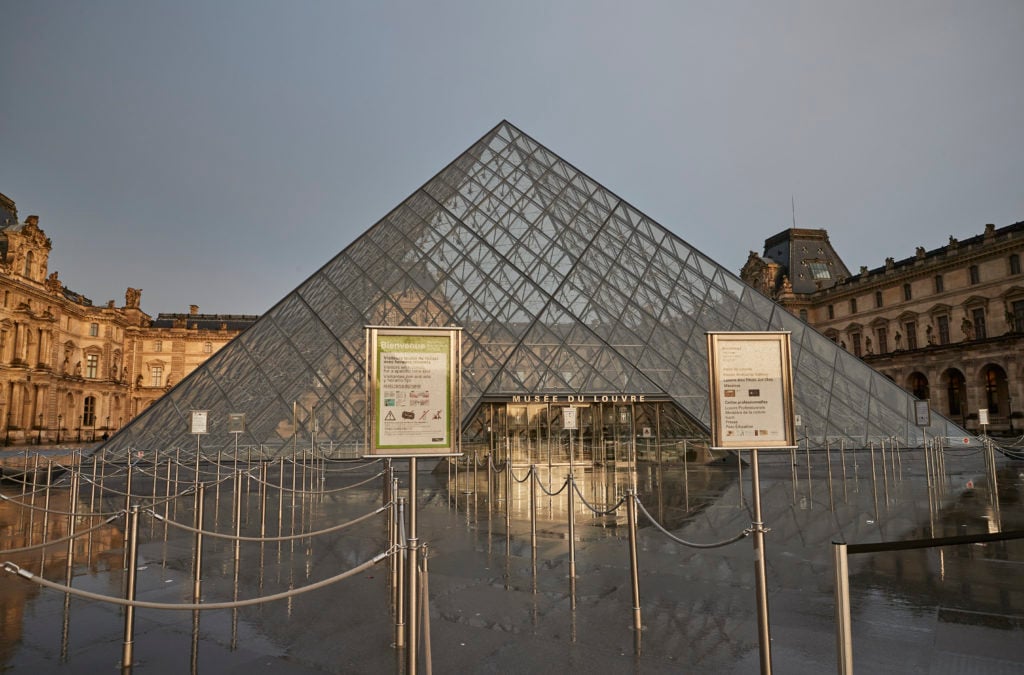
Here's how industry leaders suggest preparing for the outbreak.

Sarah Cascone &
Naomi Rea

The World Health Organization has confirmed what many have been saying for weeks: The spread of the novel COVID-19 strain of coronavirus, now in more than 100 countries worldwide, qualifies as a global pandemic.
As government officials and medical professionals scramble to contain the disease, we are entering into unknown territory.
In the art world, several major events have been postponed, cancelled, or shortened, including Art Basel Hong Kong, which was originally set to open next week, and TEFAF Maastricht, which announced yesterday that it would close four days early.
For guidance on best practices for business operations in the arts during the crisis, we spoke to several professional organizations about how they are advising their members to proceed.

The entrance to the 2020 edition of TEFAF in Maastricht. Courtesy of TEFAF.
Some organizations, like the American Alliance of Museums, have issued official resource guides. The Art Dealers Association of America is referring galleries to the official CDC guidelines, while the Association of Art Museum Directors is encouraging members to respond to the growing pandemic on a case-by-case basis.
“We do not have any formal policies with respect to the COVID-19 virus,” the head of the Association of Art Museum Directors, Christine Anagnos, told Artnet News in an email. “Like everyone else, our members are closely tracking the situation and evaluating the potential impact on their communities, staff, and visitors.”
Given the art world’s reliance on travel and large public gatherings, the need for social distancing is a growing cause for concern. “It means saying ‘no’ to in-person meetings with collectors and artists alike, and to remote working with team members and colleagues,” advised Susan J. Mumford, director of the Association of Women Art Dealers, who cancelled her planned Armory Week trip from London to the US due to the disease. Instead, she attended an event for Association of Women Art Dealer’s New York chapter and gave a lecture to local art students remotely via Zoom Meetings video conference.

A remote meeting on Zoom Meetings. Screenshot via YouTube.
Some of the coronavirus advice from art organizations applies broadly, beyond the art world. If you feel sick, stay home, and seek medical treatment if symptoms are serious. If you or someone you are close with has traveled to affected countries—China, Iran, South Korea, Italy, Japan, and Hong Kong—get tested for the virus.
“I do know that members are closely watching the travel advisory reports from the State Department related to the spread of the Coronavirus and making decisions based on those reports,” Anagnos added.
Of course, art professionals need to be adhering to the same common sense practices that apply to everyone to prevent the spread of disease. This includes properly washing your hands, not touching your face, and respecting respiratory etiquette. Most importantly, self-quarantine if you come into contact with a known case of the virus.
As the number of cases in the US continues to rise, art organizations around the country—and the world—need to be prepared for potential outbreaks. Here are the biggest takeaways about what they can do to preserve public health and mitigate the spread of disease.
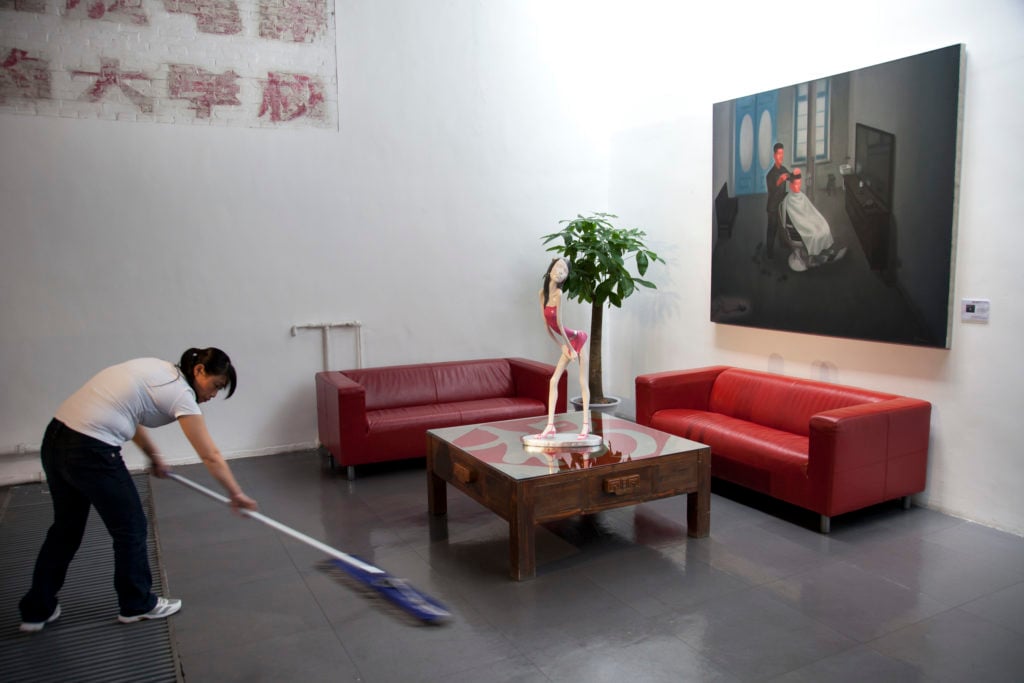
A cleaner washing the floor at 798 Art Zone or Dashanzi Art District in Beijing. Photo by In Pictures Ltd./Corbis via Getty Images.
Carry out routine environmental cleaning, including sanitizing those less obvious surfaces that are frequently touched, such as door handles, handrails, and audio guides. A Smithsonian spokesperson assured Artnet News that “we have added hand sanitizers throughout our museums, and our maintenance staff is disinfecting surfaces regularly throughout the day.”
Consider changing out the filters in the institution’s HVAC system if there is one. Make sure a trained conservator, who will use cleaning products that will not harm the artwork, is taking care of the collection.
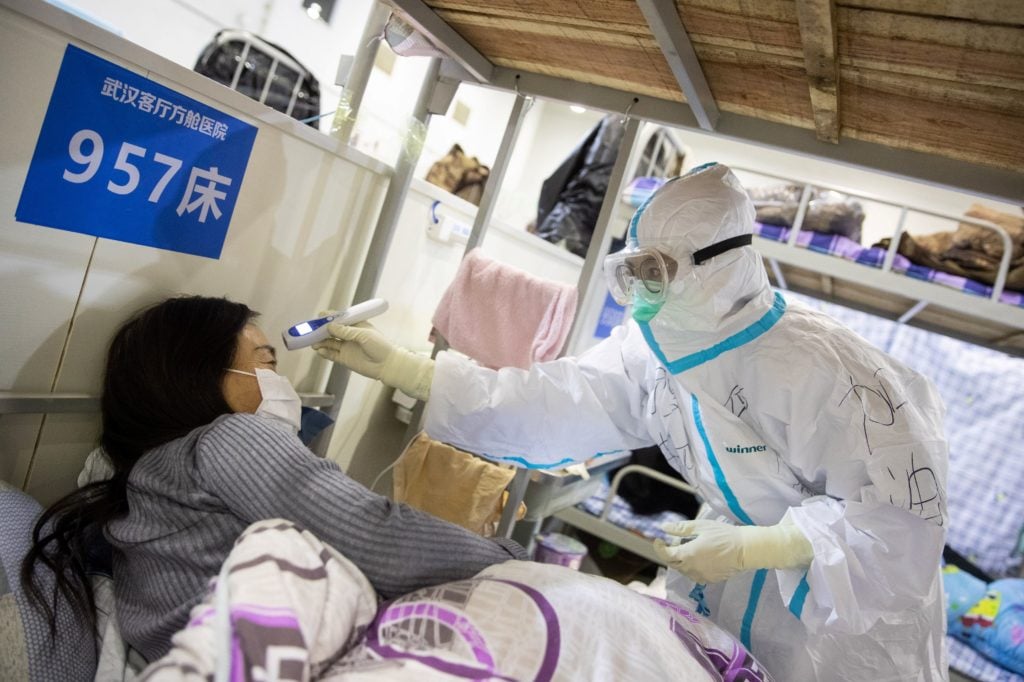
A medical staffer in China checking the body temperature of a patient who has displayed mild symptoms of the COVID-19 coronavirus, at an exhibition center converted into a hospital in Wuhan. Photo by STR/AFP/China OUT via Getty Images.
As a trusted source of information, museums have a responsibility to educate the public about the virus. The American Alliance of Museums advises institutions that “it is better to repeat facts and preventative measures than remain quiet.” So put up signs advising people on how to avoid spreading the virus.
Where it makes sense, some museums might consider incorporating coronavirus education into their programming. To counter the spread of fake news about the disease, the Smithsonian is currently staging an exhibition at the National Museum of Natural History, “Outbreak: Epidemics in a Connected World,” that aims to combat misinformation about outbreaks.
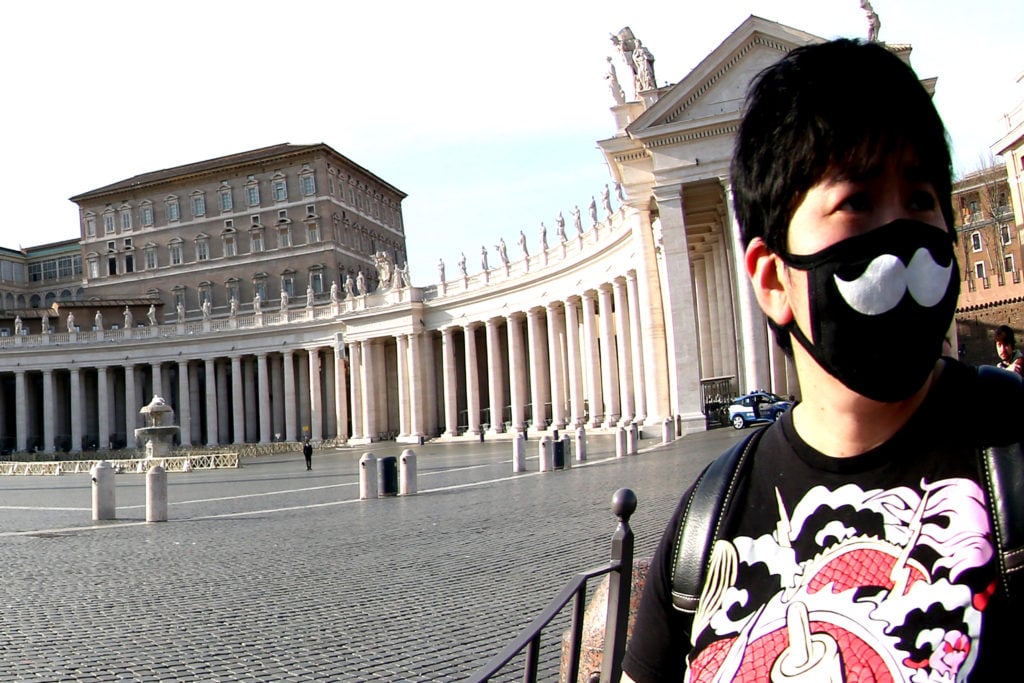
Tourists arrive at an empty and closed St. Peter’s Square due to the Vatican authority decision of today to close the Square to the all visitors on March 9, 2020. Photo by Franco Origlia/Getty Images.
The virus has caused museums across China, South Korea, Japan, and Italy to close their doors in the interest of public health. At least one US institution, Seattle’s Henry Museum of Art, has announced plans to close for three weeks, effective March 10, and it seems inevitable that others will soon follow suit.
This is where it befits an institution to have an emergency disaster plan in place that accounts for security and continued employee compensation.

Zoë Buckman, Champ. Photo courtesy of the artist.
Ahead of a forced closure, the American Alliance of Museums suggests that museums draw up and look into expanding their insurance policy. With event cancellation insurance policies, for instance, you can buy an endorsement that covers communicable diseases. (Hopefully something that Art Basel, Paris Photo New York, and other cancelled fairs have fully explored.)
Nevertheless, for many art museums and galleries, closing because of coronavirus could mean a substantial financial hit. The Association of Women Art Directors suggests galleries consider what revenue streams might dry up, and what resources a dealer has on hand to get them through a lean time: “Facing this head-on and making decisions now about where to prioritize (think: spending and saving) is paramount.”
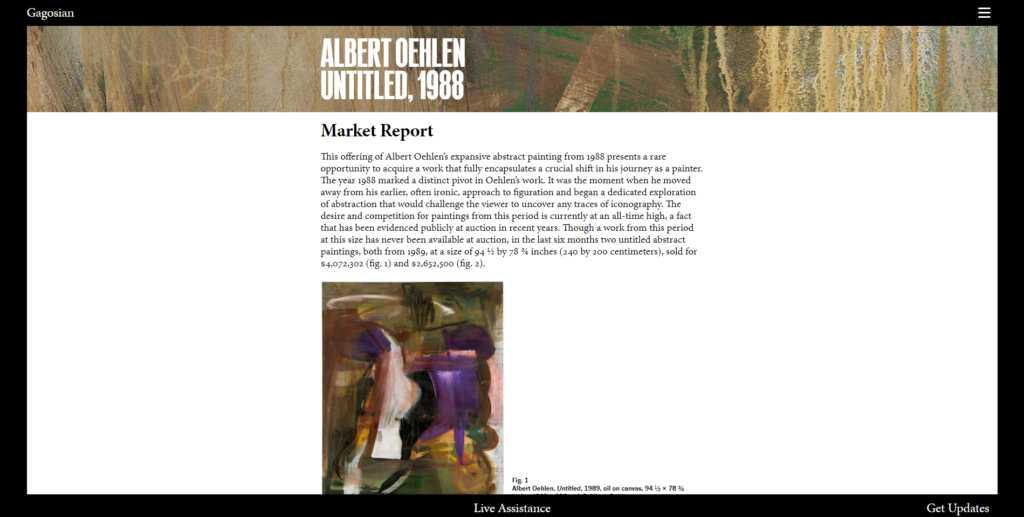
Screen capture of Gagosian’s third online viewing room, devoted entirely to a single Albert Oehlen painting.
Think of some creative ways to continue programming remotely. In Italy, where the entire population of 60 million is on lockdown, museums are rushing to digitize their collections. In Hong Kong, the art world is coming together to livestream gallery visits and artist talks, and make content that is available online.
This doesn’t just apply to non-commercial endeavors: Art Basel has launched new online “viewing rooms” in lieu of its Hong Kong fair, and commercial galleries might think about doing the same. (David Zwirner and Gagosian have been pioneers in this space.)
Curators who are stuck working from home could be using this time to research the landscape of digital art that is already out there and educate visitors on it remotely. And even if the doors are closed, you can still welcome audiences on social media, making daily updates to share fun facts about the collection or building, or engaging with the public in other ways.